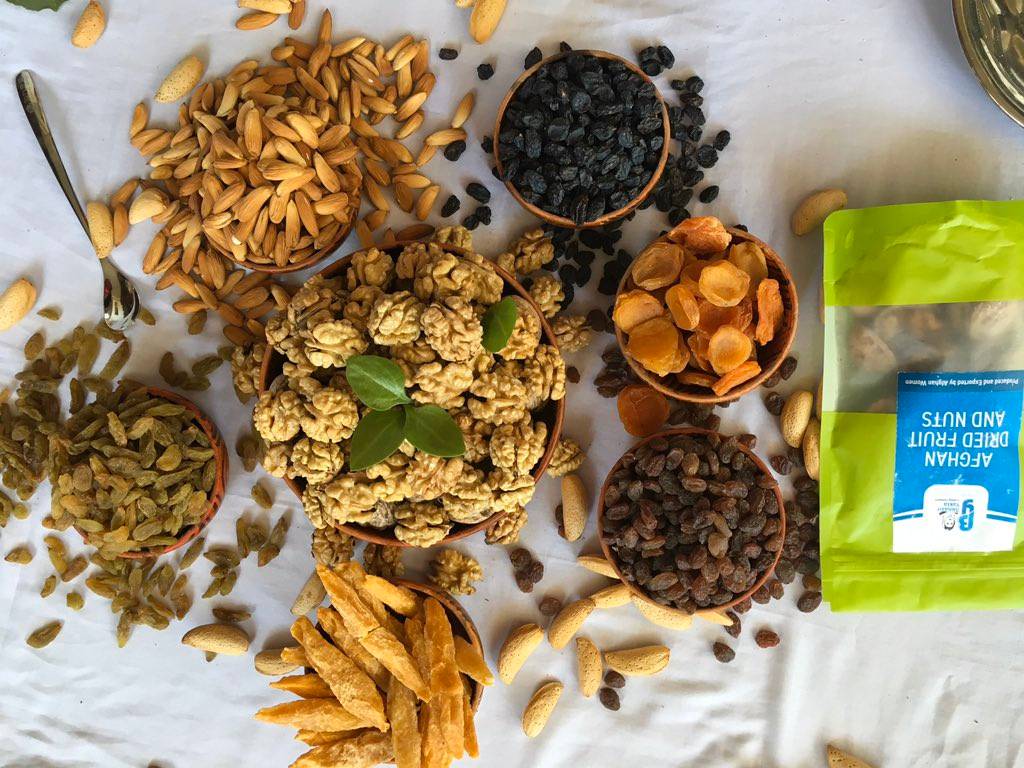
Every year, fruit vendors in Mumbai's Crawford Market received fresh apricots from Afghanistan. They were golden-red in colour, velvety in texture, and had a rich flavor with hints of acid and caramel. It was a reminder of another side of a country that is today regarded as a wasteland of desert, sorrow, and despair.
The Taliban's control of Afghanistan has concerned Indian businessmen, particularly those who import dried fruits.
Did any of the tens of thousands of people fleeing grab handfuls of Afghanistan's famed dried fruits for food? Everyone used to eat Afghani red raisins, which were so big, meaty, and toffee sweet that they made all other raisins appear insufficient. According to Helen Saberi's book "Afghan Food and Cookery," raisins are manufactured in double-story chambers with slotted walls: "Called sayagi-khana, these halls feature a network of long poles from floor to ceiling decorated with bunches of fresh grapes."
The grapes are dehydrated more slowly by fresh dry air flowing through the walls than by direct sun exposure. How many of these apartments, or the grape-growing vines, have survived the war?
Because of their early exposure to Rabindranath Tagore's Kabuliwala, many Indians must have a warm place for Afghans. The lovely Afghan father in the story, who missed his daughter, had gone to India to sell dried fruits, like many other Kabuliwalas. He would have sold asafoetida as well, though mentioning stinky hing probably didn't match Tagore's melancholy tale.
Although asafoetida has been produced in Afghanistan for generations, it is seldom utilized in cuisine, with the exception of a dried meat dish called goshte-qagh. Almost everything was designed to be marketed in India. “Hundreds of powindahs, the camel-carriers of Afghanistan, encamped outside the Kandahar gate of Herat, all engaged, they told us, in the transport of asafoetida to India for sale,” wrote Charles Yate, a British officer at the Panjdeh incident (1885), the closest Russia and Britain came to war within Afghanistan.
Besides fruits and asafoetida, Afghanistan was traditionally more of a transit point for goods from other parts of the Silk Road. They influenced Afghan cuisine, which includes Indian lentils and spices, Persian pilaus and soups, and Central Asian dumplings and kebabs. As displaced Afghans prepare traditional dishes to make a living and mourn what they have lost, the world will become more familiar with their cuisine.
This is already available in Afghan refugee settlements, such as Lajpat Nagar in Delhi, and dining there is a difficult experience. One can savor the meal, but how does one deal with the agony that brought it about? “In a world increasingly trapped in a dominant narrative of nationalism and division, it was also about challenging, rejecting, and offering alternatives to the schisms and destruction such simplistic narratives unleashed,” Durkhanai Ayubi writes in her cookbook ‘Parwana,' which tells the story of her family's escape to Australia in 1985.
Afghan cuisine may serve as a memory of a more diversified, peaceful, and abundant past, as well as a hope that the country will return to that state in the future.










